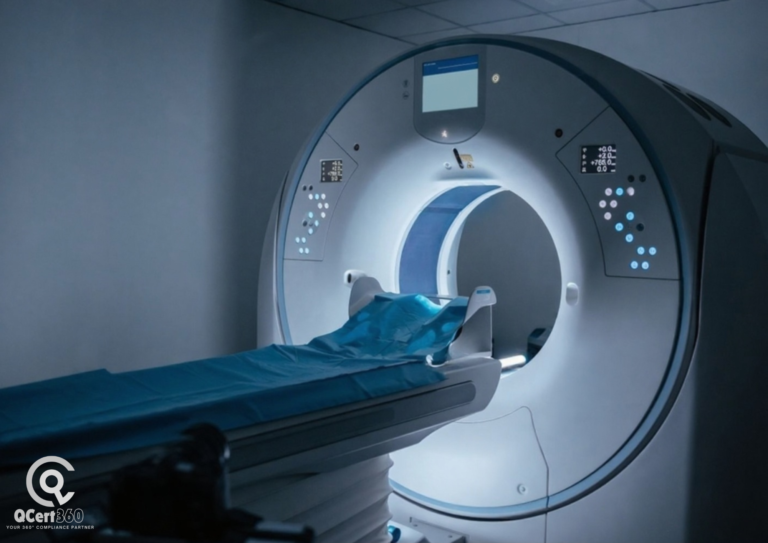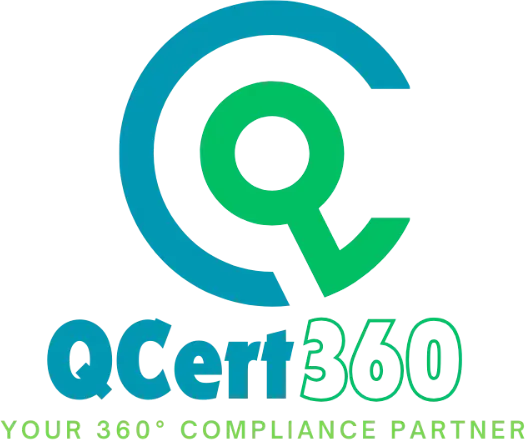
If you’re launching a medical device startup, getting ISO 13485 certified isn’t just a good idea—it’s your ticket into regulated markets like Europe. Without it, you won’t get past the front door of most hospitals, clinics, or distributors. ISO 13485 isn’t some nice-to-have quality stamp—it’s a mandatory requirement for legal market access under the EU MDR and globally recognized as the benchmark for a quality management system for new devices in medical device manufacturing.
But here’s the thing: most startups don’t realize how early they need to start working on certification. If you wait until your product is ready to ship, you’re already behind.
Let’s break it down—what ISO 13485 actually covers, why it matters in 2025, how startups can affordably and efficiently get certified, and how Qcert360 can help you cross the finish line.
What is ISO 13485 for Medical Device Startups—and Why Does It Matter?
ISO 13485 is an international standard that lays out the requirements for a quality management system (QMS) specifically for medical devices. It’s aligned with regulatory frameworks like the European MDR (Medical Device Regulation), which means if you’re exporting to Europe, your ISO 13485 certification proves you meet essential legal and safety requirements.
This is particularly important for startups in places like the UAE, South Africa, and Singapore that want to tap into the European market. Many of these countries have growing MedTech sectors, but access to developed markets requires strict quality and traceability controls.
The standard covers everything from product design and risk management to documentation, traceability, and complaint handling. If you’re building diagnostic kits, wearable medical devices, software as a medical device (SaMD), or implantable devices—ISO 13485 is non-negotiable.
Real-World Case Study: From Cape Town to Copenhagen
Let’s take a real example: A MedTech startup based in Cape Town, South Africa developed a digital spirometer for asthma monitoring. The device was Bluetooth-enabled, paired with a mobile app, and targeted at home-care patients and clinics in Europe.
At first, they thought their biggest challenge would be CE certification. But after consulting Qcert360, they realized CE marking and ISO 13485 for MedTech companies go hand-in-hand—ISO 13485 compliance was the foundation for even starting the CE process.
We helped them conduct a gap analysis, design and document their ISO 13485 quality management system for new devices from scratch, train their core team, and prep for the external audit—all within 5 months. They passed on the first try and secured CE certification for their product 3 months later. Now, they’re exporting to Denmark, Germany, and the Netherlands and scaling across Europe.
Certification Process for ISO 13485 for Medical Device Startups
Here’s how startups typically approach certification:
- Initial Gap Analysis
This is the starting point. You compare your current practices against ISO 13485 requirements for EU medical devices. Most startups are missing major chunks—like document control, design controls, validation procedures, or complaint handling workflows.
- Build or Upgrade Your QMS
Based on the gap analysis, you’ll build a QMS that fits your company. This includes policies, SOPs, risk management files, design history files (DHF), and more. For example, if you’re a telehealth company using SaMD in Europe, your system will need to integrate cybersecurity risk assessments. This is where ISO 13485 for EU MDR compliance becomes critical.
- Train Your Team
Everyone from the quality manager to product developers needs to understand the system and their roles. In places like the UAE and Europe, regulators increasingly expect evidence of training and competency for key staff.
- Internal Audit & Management Review
Before certification, you must conduct internal audits and a formal management review to ensure your QMS is functioning.
- Certification Audit
This is conducted by a notified body or accredited certification body. If you pass, you’ll receive your ISO 13485 certificate—valid for 3 years with annual surveillance audits. If you’re looking for affordable ISO 13485 consultants for startups, Qcert360 can help you get audit-ready without draining your resources.
What Makes Qcert360 Different in Obtaining ISO 13485 for Medical Device Startups?
Startups don’t have time to waste. At Qcert360, we specialize in working with fast-moving medtech companies. Whether you’re a bootstrapped team in Nairobi or a funded startup in Barcelona, we tailor our services to your stage and budget.
Our consultants have guided 100+ medical device firms globally—from diagnostic kit makers in Egypt to wearable medical device companies in the Netherlands. We understand not just the standard, but how it intersects with CE, UKCA, and FDA requirements.
We offer:
- Affordable ISO 13485 consultants for startups
- Virtual ISO 13485 training and ISO 13485 documentation checklist for startups
- Fast-track ISO 13485 audit preparation for medical device SMEs
- Dual-pathway support for CE marking and ISO 13485 for MedTech companies
With support offices in the UAE, Europe, and Southern Africa, we’re plugged into local compliance needs while preparing you for global scale.
Why ISO 13485 for Medical Device Startups Matters in 2026 More Than Ever
Post-pandemic, regulators are stricter than ever. MDR enforcement in the EU has become more rigorous. In 2025, device approvals are not just about performance—they demand full traceability, complaint resolution plans, and supplier control systems.
And let’s not forget: investors and distributors in Europe are now demanding ISO 13485 as a precondition. Without it, you won’t even get into the negotiation room.
Platforms like Amazon and Alibaba have also begun to restrict listing of certain health products unless backed by ISO 13485 or CE certification. If you’re planning to get ISO 13485 certified in Germany or Netherlands, the process starts with aligning your internal systems with both regulatory and market expectations
Key Challenges Startups Face—and How to Solve Them
- Cost: Many startups assume ISO certification costs are out of reach. But if you work with the right consultants, you can implement a lean system that scales.
- Time: You don’t need to pause product development. We help you build the QMS in parallel, integrating with your product lifecycle.
- Complexity: ISO 13485 has a lot of moving parts—risk files, validation, traceability. We simplify this with real-world templates and startup-friendly documentation systems.
Where Startups Are Getting Certified Right Now
We’re seeing major ISO 13485 demand from:
- South Africa: Especially for mobile health and diagnostics
- Singapore & Malaysia: A booming export hub for devices entering Europe
- Kenya & Ghana: Emerging MedTech innovators aiming at EU entry
- Egypt: High-growth region for contract manufacturing of devices
- Netherlands, Sweden, and Germany: Regulatory-heavy but high-reward European markets
If you’re targeting any of these regions—or planning to expand from them—you need to get ISO 13485 certified in Europe early.
Pro Tips to Speed Up ISO 13485 Certification for startups
- Start with a lightweight QMS and scale it as you grow.
- Don’t copy-paste templates—tailor your documents to your actual operations.
- Use a consultant who understands startups, not just big pharma.
- Align your ISO 13485 project with your CE marking and EU MDR roadmap.
Train early—auditors ask your team questions, not just review papers.
10 FAQs on ISO 13485 Certification for Startups
- How long does ISO 13485 certification take for startups?
Typically 4 to 6 months, depending on your product complexity and resources. - Is ISO 13485 mandatory to sell in Europe?
Yes, for most EU medical devices, ISO 13485 is either required or expected. - Can I self-certify my startup without ISO 13485?
Not in Europe. You need third-party certification for Class IIa and above. - What’s the cost of ISO 13485 certification for startups?
It ranges depending on scope, number of sites, and consultancy support and other facctors. - Can software-only medical devices be certified under ISO 13485?
Yes. SaMD is included, and cybersecurity is a growing focus area. - Do I need ISO 13485 for CE marking?
Yes. It provides the quality backbone required for CE documentation. - What’s the difference between ISO 9001 and ISO 13485?
ISO 9001 is generic; ISO 13485 is tailored for medical device manufacturing and includes stricter controls. - Can ISO 13485 help me raise funding?
Absolutely. Investors take you more seriously when compliance risks are minimized. - Is ISO 13485 accepted outside Europe?
Yes. It’s globally recognized and aligns with Health Canada, Australia TGA, and many others. - Can Qcert360 help us with both ISO and CE marking?
Yes. We offer bundled services for ISO 13485, CE, and UKCA routes.
Ready to Get ISO 13485 Certified?
If you’re a medical device startup and plan to sell in Europe, ISO 13485 is not optional—it’s a must-have. Start now, before regulators, investors, and customers push you out of the market.
Qcert360 is ready to help you get certified, stay compliant, and go global.
Want a free ISO 13485 startup guide for biotech and MedTech or consultation?
Contact Qcert360 to get started.


